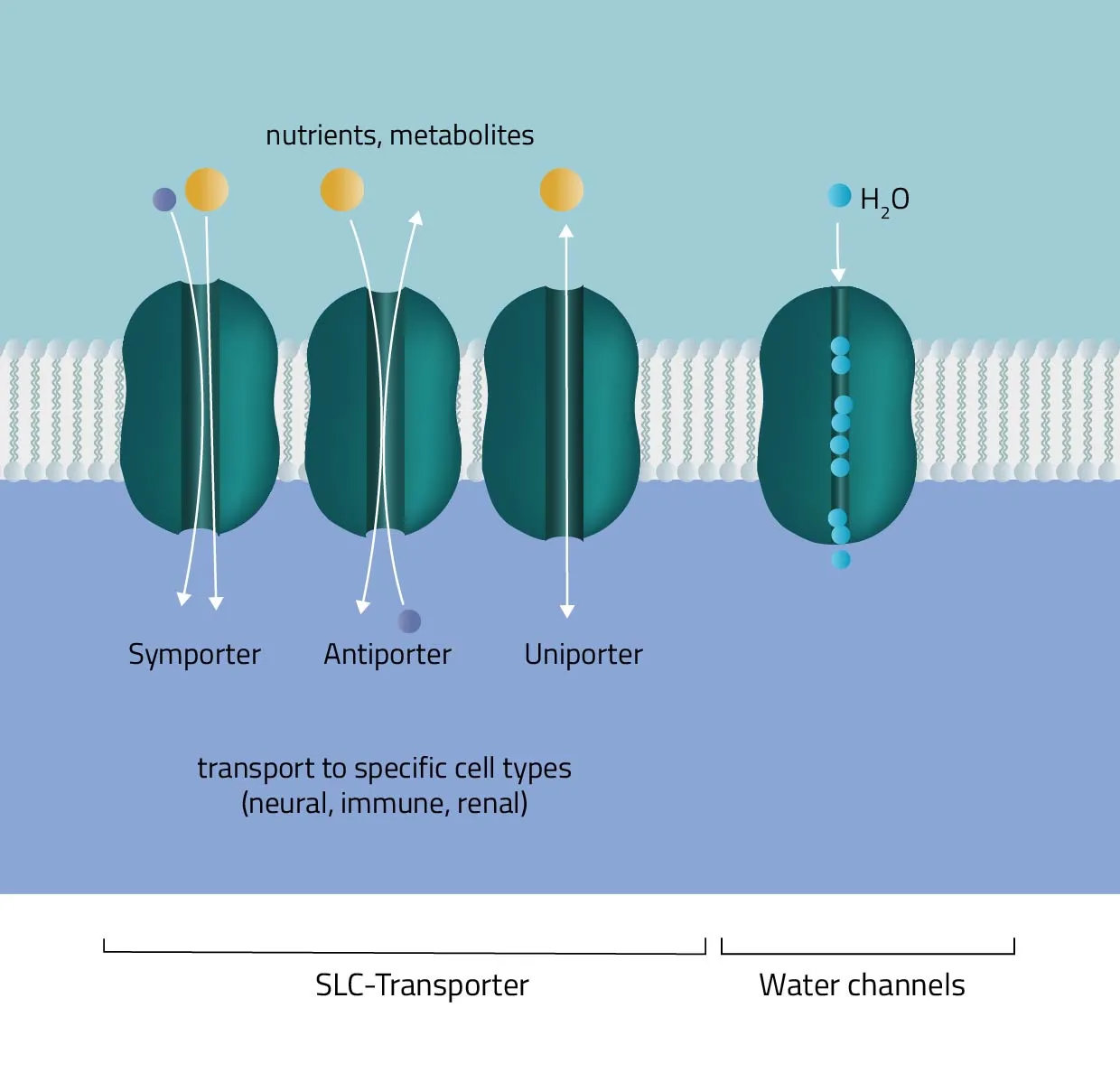
What are membrane proteins and their roles in transport

Membrane proteins play a vital role in the overall functionality of biological systems. These membrane transport proteins are integral components of cellular membranes, allowing for the movement of various substances across the lipid bilayer. Understanding the structure and function of these proteins is essential for deciphering how cells communicate, regulate internal environments, and maintain homeostasis. With a significant focus on membrane protein transport, it becomes evident that these proteins are crucial for cellular transport and signaling.
This article delves into the intricate world of membrane transport proteins, exploring their types, structures, and specific roles in transport mechanisms. We will examine how these proteins operate within the biological membranes and their importance in facilitating essential cellular processes. From channels to carriers, the diversity of membrane transport proteins underscores their significance in the functionality and adaptability of living organisms.
- What are Membrane Proteins?
- Types of Membrane Proteins: Intrinsic vs. Extrinsic
- Structure of Biological Membranes
- Functions of Biological Membranes
- The Role of Membrane Proteins in Transport
- Mechanisms of Transport: Channels and Carriers
- Importance of Membrane Fluidity
- Membrane Proteins in Organelles
- Conclusion
- References
What are Membrane Proteins?
Membrane proteins are specialized proteins that interact with cellular membranes, playing a key role in various physiological processes. These proteins are primarily classified into two categories: intrinsic (or integral) proteins and extrinsic (or peripheral) proteins. The unique characteristics of these proteins enable them to fulfill essential functions within the cellular environment, especially in relation to transport mechanisms.
Types of Membrane Proteins: Intrinsic vs. Extrinsic
Intrinsic proteins are those that are embedded deeply within the lipid bilayer, interacting closely with the hydrophobic core of the membrane. They often span the entire membrane and are involved in critical processes such as transporting ions and molecules. On the other hand, extrinsic proteins are more loosely associated with the membrane's surface and can be removed more easily. They primarily serve as enzymes or receptors that can relay information from the extracellular environment into the cell.
Intrinsic Proteins
- Channel Proteins: These proteins create pores that allow specific ions or water molecules to pass through the membrane without the need for energy.
- Carrier Proteins: Unlike channel proteins, carrier proteins undergo conformational changes to transport molecules across the membrane, often requiring energy input in the form of ATP.
Extrinsic Proteins
- Receptors: These proteins bind to signaling molecules, initiating a cascade of cellular responses.
- Enzymes: Extrinsic proteins can also catalyze biochemical reactions at the membrane surface.
Structure of Biological Membranes
The structure of biological membranes is fundamental to understanding the role of membrane transport proteins. The fluid mosaic model describes membranes as dynamic structures composed of a phospholipid bilayer embedded with various proteins, cholesterol, and carbohydrates. This arrangement provides flexibility and integrity, enabling the membrane to adapt to different cellular conditions while maintaining a barrier between the internal and external environments.
Functions of Biological Membranes
Biological membranes perform three essential functions: protecting the cell from external threats, facilitating selective transport of molecules, and maintaining compartmentalization within organelles. The interaction between the lipid bilayer and membrane proteins is what enables these membranes to effectively carry out these functions. The composition of the membrane, particularly the presence of membrane transport proteins, plays a crucial role in determining the permeability and functionality of the cell membrane.
The Role of Membrane Proteins in Transport
Membrane transport proteins are indispensable for the transport of ions, small molecules, and larger substrates across the cellular membrane. Their specialized structures significantly influence the type of transport that can occur. For example, ions often require dedicated channels, while larger or polar molecules typically utilize carrier proteins. The selectivity and efficiency of transport processes are largely determined by these proteins, which ensure that necessary substances enter and leave the cell as needed.
Mechanisms of Transport: Channels and Carriers
The transport mechanisms facilitated by membrane proteins can be broadly categorized into passive and active transport. Passive transport processes, such as diffusion and facilitated diffusion, allow molecules to move along their concentration gradients without the use of energy. In contrast, active transport mechanisms utilize energy, often derived from ATP, to move substances against their concentration gradients, ensuring essential nutrients and ions are maintained at optimal levels within the cell.
Passive Transport
During passive transport, membrane transport proteins enable molecules to cross the membrane without expending energy. Examples include:
- Ion Channels: Specific channels facilitate the movement of ions like sodium, potassium, and calcium, which are crucial for maintaining cellular function.
- Facilitated Diffusion: This is a type of passive transport where molecules, such as glucose, are transported across the membrane via specific carrier proteins.
Active Transport
Active transport mechanisms are vital for cells to maintain homeostasis by controlling the internal concentrations of various substances. The key features of active transport include:
- Sodium-Potassium Pump: This pump moves sodium ions out of the cell and potassium ions into the cell against their respective gradients, a process essential for maintaining cellular potential.
- Proton Pumps: These pumps actively transport protons across membranes in organelles such as mitochondria, playing a critical role in energy production.
Importance of Membrane Fluidity
The fluidity of the membrane is a crucial aspect that affects the functionality of membrane transport proteins. Membrane fluidity is influenced by factors such as temperature, lipid composition, and the presence of cholesterol. A fluid membrane facilitates the movement of proteins and lipids, allowing for better interaction and transport capabilities. On the flip side, a highly rigid membrane can hinder the function of transport proteins, limiting the cell's ability to adapt to various conditions.
Membrane Proteins in Organelles
Membrane transport proteins are also critical in organelles, where they contribute to specialized functions unique to each cellular structure. For example, in mitochondria, membrane proteins participate in oxidative phosphorylation, providing energy for cellular processes. In the endoplasmic reticulum, membrane proteins assist in the synthesis of proteins and lipids, while the role of these proteins in lysosomes is vital for the breakdown and recycling of cellular waste.
Conclusion
membrane proteins are essential components of biological membranes, playing a pivotal role in maintaining cellular integrity and facilitating membrane protein transport. By understanding the different types and functions of membrane transport proteins, we gain insight into how cells manage internal environments and communicate with their surroundings. Further exploration of these proteins enhances our comprehension of cellular biology and opens doors to innovative therapeutic approaches for various diseases linked to transport dysfunction.
References
1. Membrane Protein Structure and Function. (2022). Journal of Molecular Biology.
2. Cellular Transport Mechanisms. (2021). Cell Biology Reviews.
3. Lipid Bilayer Dynamics. (2023). Biochemistry Journal.
4. Role of Membrane Proteins in Homeostasis. (2020). Nature Reviews: Molecular Cell Biology.
Did you find this article helpful? What are membrane proteins and their roles in transport See more here Education.
Leave a Reply






Related posts